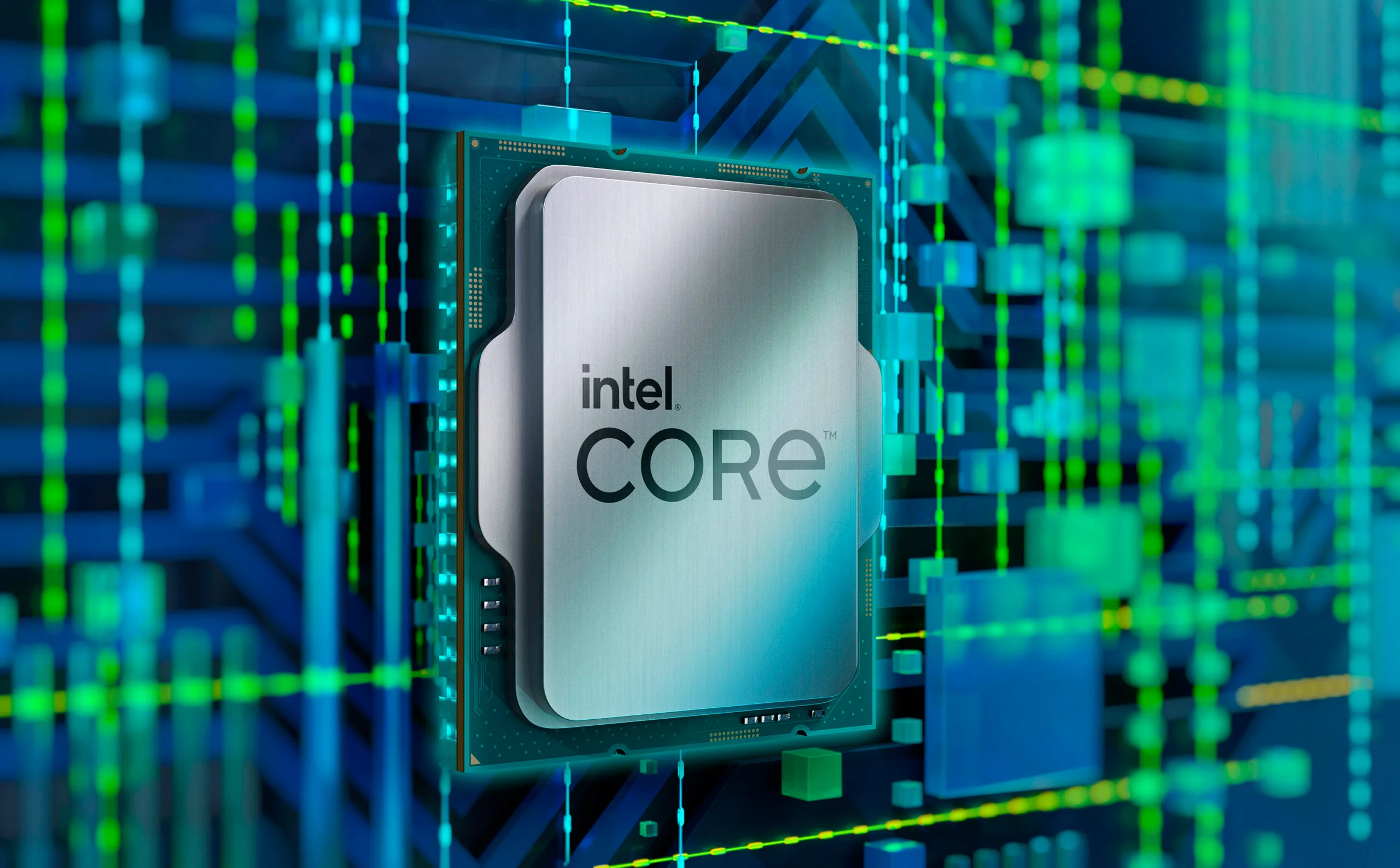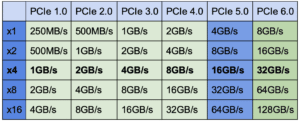
A Crash Course to PCIe Gen 5.0
Posted on September 7, 2022
PCIe Gen 5.0-supported motherboards have just started hitting the shelves, and it won’t be long before graphic cards and SSDs taking advantage of the speed boost follow suit.
An Introduction to PCI-Express
Peripheral Component Interchange Express or PCIe is the technology that enables you to extend the functionality of the motherboard. Be it a hard drive or a network card, it needs the high-speed connectivity of PCIe to interface with other components.
This makes the data transfer capabilities of a PCIe card its most important characteristic, as it often acts as the bottleneck for a system’s performance. And every new generation improves on this metric.
Even within the same generation, PCIe cards differ by the number of “lanes”. Each lane represents a possible data stream, making higher lane cards capable of transmitting more data per second.
The lane multipliers follow a binary pattern, ranging from x1, x2… up to x16. An increased lane count also translates to a physically wider card, with x16 being the largest size available.
To save costs, PCIe slots often support fewer lanes than their size indicates. For example, 4-lane x16 slots are a common sight. This obviously decreases performance, often creating a bottleneck for demanding GPUs or high-speed SSDs.
The Need For Speed: Or How PCIe is Holding SSDs Back
The development of NVMe SSDs dramatically improved SSD performance, making it possible to achieve a throughput of 32GB/s. Theoretically, at least.
In practice, PCI-Express can only access only a fraction of that speed. Be it PCIe 1.0, 2.0, or even 3.0, the standard just didn’t have the bandwidth to support the required performance.
Even in PCIe 4.0, it is possible to reach a data transfer rate of 32GB/s only when using all 16 lanes, which is hard to find on most motherboards. To reach the maximum potential of NVMe SSDs, we need even faster transfer rates.
PCIe Gen 5.0 Speeds vs Previous Generations
Every PCIe generation doubles the data transfer rate from the previous generation. With PCIe 5.0 we can get 4GB/s from a single lane, which translates to an incredible 16GB/s in a standard 4-lane slot.
As you can see from the table, switching from PCIe 4.0 to PCIe 5.0 directly doubles speed at the same number of lanes. A standard x16 @x4 slot can reach half of an NVMe SSDs theoretical limit.
But that doesn’t mean you can start using the new standard right away. Only the latest processors – Intel 12th Gen and AMD Ryzen 7000 series – support PCIe 5.0, with most of the current lineup suited for PCIe Gen 4 cards.
More importantly, we are yet to see any peripherals actually implementing the latest generation of PCI-Express. While some products have been announced, it will probably take till the end of 2022 for a widespread rollout.
But PCIe Gen 6.0 Is Also On the Way
The world of communication standards moves quickly, and the PCI Special Interest Group (PCI-SIG) has already released the 6.0 standard as well. And this time, the improvements go beyond doubling the transfer rate.
Like PCIe Gen 3.0 before it, the 6.0 specification introduces a new, more efficient encoding method that allows for more information to be transmitted using the same number of bytes. This enables the upcoming standard to perform better than previous generations even at the same transfer speeds.
This improved encoding algorithm will be carried forward in the PCIe 7.0 specification as well, rendering the current 128b/130b encoding a relic of the past.
So does PCIe 5.0 Even Matter?
Incredible as the specs of PCIe 6.0 appear, they are still yet to be realized. Manufacturers need time to adapt to a new standard, especially one with changes as drastic as PCIe 6.0.
For the next couple of years, PCI Gen 5.0 is going to be the fastest possible version of PCI-Express you can get. Its 4-lane speeds are already fast enough to eliminate most of the bottlenecks with current PCIe implementations, giving a tangible boost in performance.
That being said, systems using PCIe 4.0 don’t have to rush for an upgrade either. Gen 4 processors can keep powering any commercial applications for a few more years, after which you can make the transition to the new PAM4-enabled PCIe generations.

